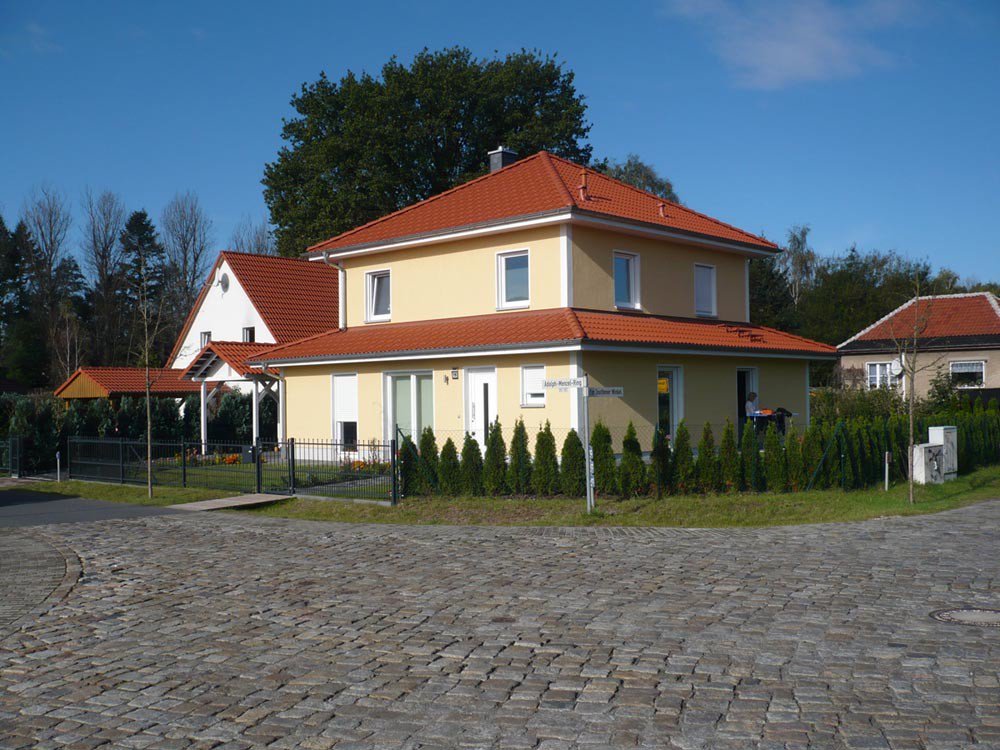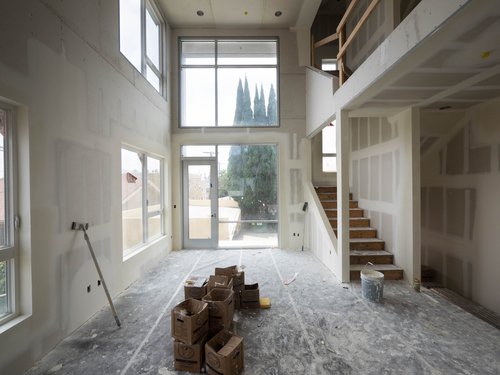Thanks to the new Energy Saving Ordinance – EnEV for short – a photovoltaic system will adorn almost every newly built roof by 2020 at the latest. In the future, houses should consume almost no energy, which is why the state has given the new buildings the appropriate name “almost zero energy buildings”. Photovoltaic systems have been on the market for a long time and were even subsidized a few years ago. This is no longer the case today – but it is no longer necessary. Nevertheless, many landlords weigh very carefully whether the costs of a possible investment are worthwhile for them. But what information should you actually take into account when purchasing your own solar system?
Our solar technology expert Uwe Biermann has put together 10 important tips and facts for you that will save you a lot of trouble!
the essentials in brief
- It is now cheaper to use the electricity you produce yourself. Therefore, based on your power requirements, decide how large your system should be.
- The quality is the decisive aspect of a photovoltaic system: Your system is exposed to all weather conditions, but should still perform very well in poor light and last as long as possible.
- In the event of guarantee and insurance claims, ask exactly who you need to contact. Make sure that you also have a contact person in Germany and not only in the country of manufacture if you have problems.
1. Own consumption vs. feed-in
Until 2010, it was more economical for homeowners to feed all of the electricity they produced themselves into the grid. A purchased kilowatt hour of electricity cost less than what you got for one produced by the state. That’s different today. Due to rising electricity prices and the suspension of the subsidy, the consumption of self-produced electricity is much more worthwhile. A household that produces electricity and does not use it can still feed the electricity into the public grid and is paid for it. Not a single kilowatt hour generated is lost.
2. Rated output of a photovoltaic system
The rated power or peak power of a system is the peak electrical power that a system can achieve under ideal test conditions. In reality, the true values deviate greatly in some cases – especially since the number of hours of sunshine in Germany is limited. However, many people choose their investments based on exactly this number. Instead, consider this value only as a guide value and have your advisor explain other key figures, such as weak light behavior (see point 4).
3. Kilowatt peak price
In the photovoltaic industry, the so-called kilowatt peak price has established itself for price information. For a better comparison of systems with different technical requirements, the price per electrical output is therefore often given as a function of a specific module area. Understandable for experts, often difficult for laypeople to understand – especially since, as already mentioned, the technical requirements and conditions are often laboratory test conditions. A good adviser will also be able to calculate how many kilowatts the system generates per square meter and how much one square meter of your system costs for better understanding. This, in turn, can then be used to calculate the price per kilowatt hour of electricity generated, which can then be compared with potentially purchased electricity.
4. The weak light behavior
The weak light behavior of the photovoltaic modules is much more important than the nominal output. What’s the use of a high-rated system that only works well under optimal conditions, but produces little power in dim light? The qualitative processing of the modules gives a good indication of the weak light behavior. The higher the quality of the modules, the better the current flow. This in turn results in more electricity being generated – even under less than ideal lighting conditions.
5. Life expectancy of a photovoltaic system
In order to survive in international competition, many suppliers have also started to produce cheaper and therefore often lower quality. This primarily affects the life expectancy of the system and thus the customer’s wallet. A good premium product has a lifespan of around 30 years. If you get poor-quality goods, it is not uncommon for modules to become obsolete after three to four years. The cells are usually not the problem. On the other hand, savings are made on the back foil, whose task is to ensure the protection of all components of the solar module and to electrically insulate the active elements.
6. Low maintenance
One often encounters the prejudice that the maintenance of photovoltaic systems is both expensive and time-consuming. As a result, interested parties are often talked into useless maintenance contracts when they make a purchase. As a rule, photovoltaic systems have to be cleaned every five to seven years. In the meantime, nature is helping us again: rain rids the modules of dirt by raising them at an angle. Of course, there are also systems that have to be cleaned more frequently, for example if they are exposed to acid rain or too much pollen from nearby industrial plants. If you did not consider such circumstances at the beginning, there is still no reason to worry, because maintenance contracts can also be concluded afterwards.
7. Alignment of facilities
Many interested parties reject the idea of a photovoltaic system because their roof does not face south. However, roofs sloping to the east and west are also suitable up to an incline of around 45 degrees. This orientation is even recommended for flat roofs. In this way, the modules can be railed next to each other on flat roofs, oriented alternately to the east and west. This avoids the problem of the modules shading one another and makes optimum use of the roof area. Even if the yield is a little lower than with the conventional orientation, the advantage lies in the longer running times that come about through the use of the morning and evening sun. However, the elevation must then be weighed down to a greater extent in order to take account of the higher air resistance. Overall, however, the additional yield is more than 40%.
8. Insurance and Guarantee Claims
Unfortunately, what often gets lost when making a purchase is a scrutinizing look at the procedure for insurance and guarantee claims. First of all, there is a strict distinction between insurance and guarantee.
A warranty covers damage to the module and the individual components. The system installer – usually the German company that sells you the product – ensures correct installation of the finished components. However, if these break, you have to contact the manufacturer directly, who is often located abroad. If the worst comes to the worst, you must formulate your warranty claims in the local language. The dilemma is perfect…
Insurance benefits, in turn, cover damage caused by external influences such as storms or hail. Companies that offer systems very cheaply often save on these services. Insurance then has to be purchased afterwards, which is usually very expensive. It is often difficult for buyers to distinguish comprehensive offers from incomplete offers. Therefore, ask about all eventualities:
- Who do you contact if a component stops working?
9. Combination of photovoltaics and solar thermal
A combination of solar thermal and photovoltaics on one roof is not recommended. Only in a few cases, above all in buildings with a very high consumption, could this pay off. Instead, combine your photovoltaic system with a service water heat pump. If your photovoltaic system produces more electricity than you can consume at a certain point in time, the hot water storage tank of a service water heat pump is charged. In this way, electricity can be converted into heat and stored extremely efficiently.
10. Real quality
The following applies in particular to photovoltaic systems: if you buy cheap, you won’t save in the long term. Keep in mind that your investment can only pay off if it really lasts for many years. It should provide high performance for as long as possible, both in unfavorable lighting conditions and in all kinds of weather conditions.
Therefore, get extensive advice, insist on precise answers, have the product shown to you, read testimonials, ask about the production facilities and opt for quality, even if this initially means a higher investment. Believe me, quality pays off!
When buying, pay attention to:
- extensive advice
- show modules
- request precise explanations regarding the product
- View vendor’s exhibition
With this knowledge, you can start well-informed in any consultation on the subject of photovoltaic systems.




